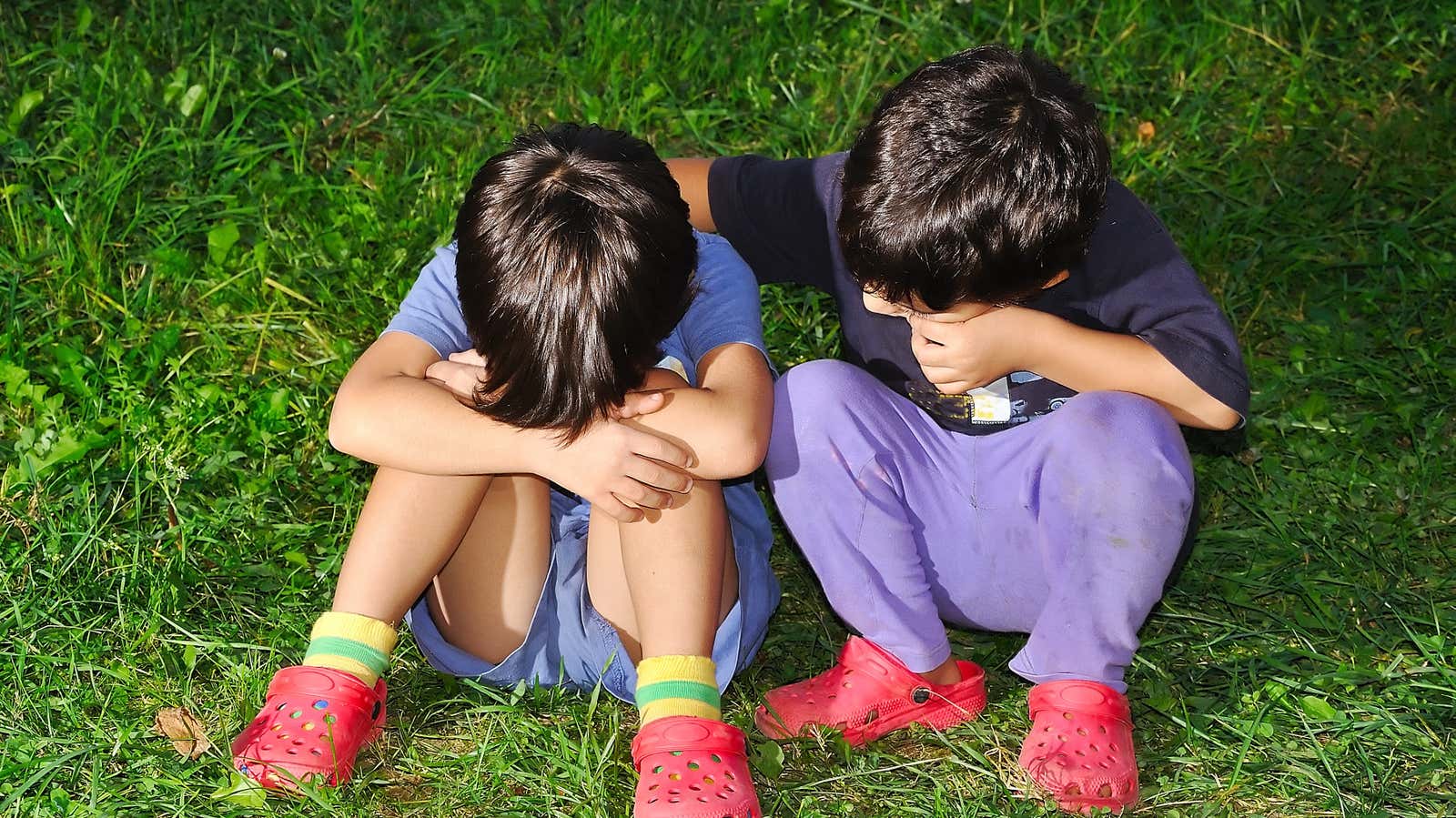How to Make Your Child Feel Empathy

When it comes to raising empathetic children , counseling parents usually involves talking to them about the feelings of others, encouraging them to imagine how the other person is feeling, and praising them when they show empathy.
But there is one simple tool that is not discussed. I’ve used it with my kids, and while I haven’t seen this advice in any article on developing empathy yet, it is consistent with current research and what we know about how people interact with each other.
I ask my children to look each other in the eyes.
That’s all. It is so simple. To be clear, this method does not replace the other empathy tactics mentioned above, but I have found it to be an incredibly useful tool to keep in my parenting toolbox.
This is how I used it:
My son is four years older than my daughter. When they were young and still figuring out the dynamics of their relationship, they naturally got into skirmishes from time to time. My son tends to be the more hot-tempered of the two, and there have been several times when he either threw something at his little sister or pushed her so hard that she was injured. After that, still angry, he retreated into himself, crossing his arms and staring at the floor.
The first time it happened, I punished my son as usual by taking his hand and explaining that what he did was not good: we do not harm people, we must be kind and use our words when we are angry … Perhaps I asked him to sit alone for a few minutes and think about how he could handle the situation differently in the future.
But one day, in the midst of a skirmish in which he lashed out at his sister, I noticed the expression on my daughter’s face. She cried, not so much physically offended as overwhelmed by the thought that her brother would hurt her. I felt her broken heart in my own heart. Instinctively, I went down to my son’s level and looked into his eyes. “Look at your sister’s face. Actually look at her. ” I was confident in my son’s love for his sister. I knew that it would hurt him to see her cry, and to know that it was himself.
Why This Technique Works
Research shows that even babies recognize facial expressions and can match the feelings that are associated with a person’s facial expression with their own mental state. This is the beginning of empathy. Humans have evolved to use facial expressions as cues to understand how the other person is feeling – this is the basis of our relationship to each other.
My son looked at his little sister, her face red and wet with tears, her eyebrows raised in horror, her small shoulders trembled as she cried. He could not help but absorb the damage done. His anger dissipated immediately, and after a few moments he was already hugging her and apologizing. It only took a couple of times to do it before my son got to the point where he really didn’t want to hurt his sister. It hurt him too much.
This tactic is useful not only for deterring hurtful actions, but also for rewarding kindness. My daughter will compliment my son’s guitar playing and he will smile his little grateful smile and I will point this out to my daughter. Her small breasts swell with pride and happiness upon learning that she has given a boost to her older brother. My son will compliment his sister’s singing or drawing, and a proud smile will flash on her face. I will tell my son: “Look at her face! Look how good you just made her feel! “- and suddenly he, too, grins, as if the grin is contagious. Because that’s the way it is.
So, keep using all the standard tools for developing empathy in your children. Talk to them about kindness and why it is good to try to relate to others. But also remember that sometimes the quickest way to deeply feel what another person is feeling is to just look them in the eye.